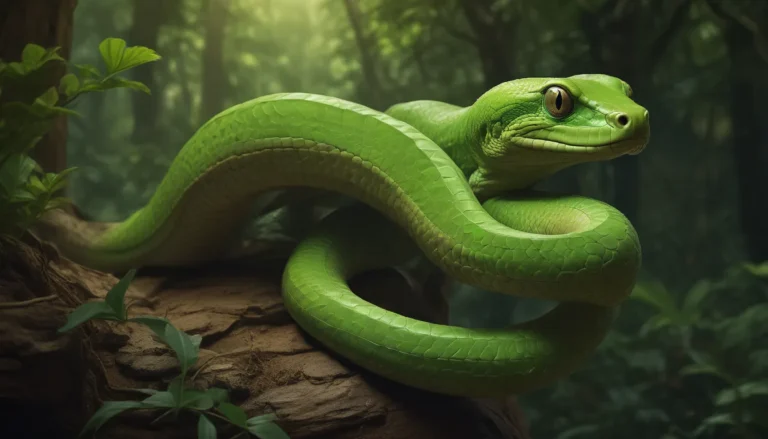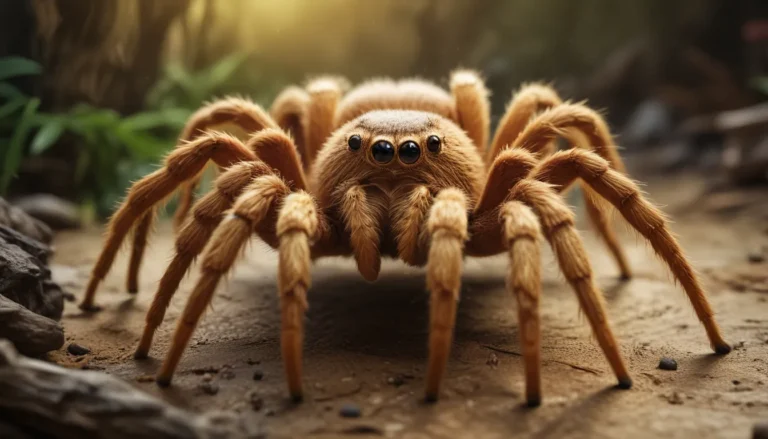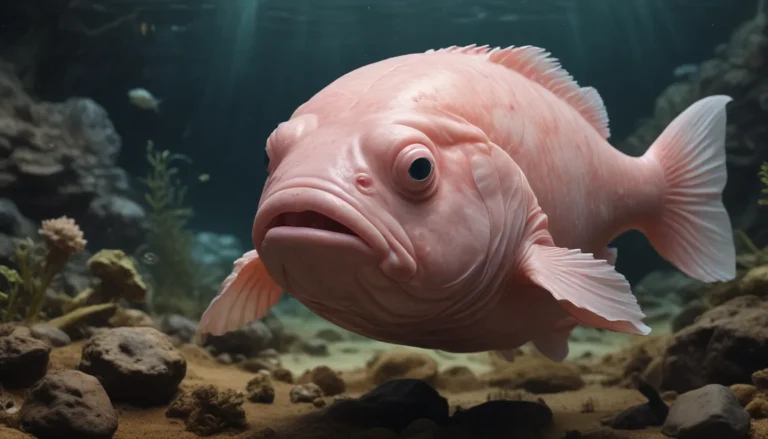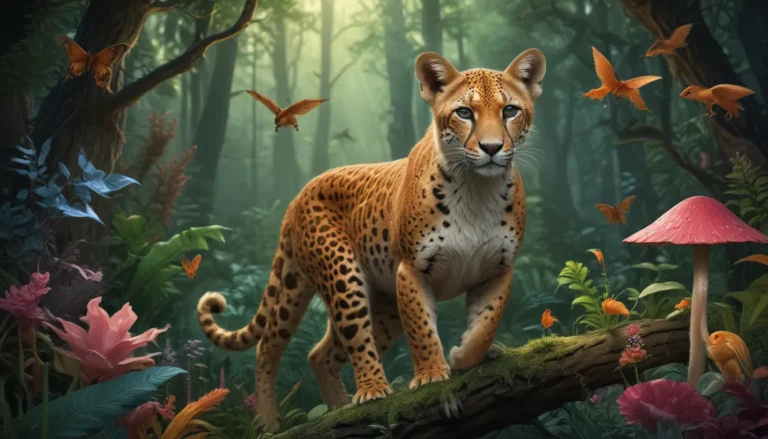The pictures we use in our articles might not show exactly what the words say. We choose these pictures to make you interested in reading more. The pictures work together with the words but don’t take their place. The words still tell you the important facts.
Welcome to the enchanting world of the Amazon Basin Emerald Tree Boa, a captivating creature that thrives in the lush rainforests of the Amazon Basin. Known for its vibrant green hue, unique appearance, and fascinating behaviors, this majestic snake has intrigued scientists and nature enthusiasts alike. In this article, we will unravel 15 intriguing facts about the Amazon Basin Emerald Tree Boa, shedding light on its remarkable adaptations, behaviors, and significance in the rainforest ecosystem. Join us on this exciting journey as we delve into the magical realm of this enigmatic species and gain a deeper understanding of what makes it such a remarkable inhabitant of the rainforest.
Unveiling the Mysteries of the Amazon Basin Emerald Tree Boa
The Amazon Basin Emerald Tree Boa, scientifically known as Corallus caninus, is a species of non-venomous snake that calls the South American rainforests its home. Let's explore some captivating facts about this extraordinary creature:
1. Unique Appearance
One of the most striking features of the Amazon Basin Emerald Tree Boa is its vivid green coloration, which allows it to blend seamlessly into the verdant foliage of its habitat. This camouflage adaptation is essential for their survival in the dense rainforest environment.
2. Arboreal Lifestyle
These boas are expert climbers, spending the majority of their time in trees due to their long, slender bodies and prehensile tails. Their arboreal lifestyle enables them to navigate effortlessly among the branches, making them agile predators in the canopy.
3. Impressive Size
Females of the Amazon Basin Emerald Tree Boa can grow up to 6 feet in length, with males typically slightly smaller. Their size and strength make them formidable predators, playing a crucial role in maintaining the balance of the rainforest ecosystem.
4. Unique Head Shape
The triangular-shaped head of these boas is a distinctive feature that aids in their hunting and prey-capture techniques. This specialized adaptation enhances their maneuverability and precision when targeting prey in the canopy.
5. Feeding Habits
As constrictors, Amazon Basin Emerald Tree Boas wrap their bodies around prey to immobilize and suffocate them before ingestion. Their diet primarily consists of small mammals, birds, and occasional reptiles, showcasing their role as predators in the rainforest food chain.
Nurturing the Ecosystem: The Role of the Amazon Basin Emerald Tree Boa
6. Conservation Status
The International Union for Conservation of Nature (IUCN) lists the Amazon Basin Emerald Tree Boa as a species of least concern. However, threats such as habitat destruction and illegal wildlife trade pose risks to their population, emphasizing the importance of conservation efforts.
7. Reproduction
Female Emerald Tree Boas give birth to live young, a unique trait among snake species. They can produce litters of up to 10 neonates, contributing to the population dynamics of their species.
8. Long Lifespan
With an average lifespan of around 20 years, Amazon Basin Emerald Tree Boas can live well into their 30s in captivity. Their longevity underscores the need for sustainable conservation practices to protect their habitat and ensure their survival.
9. Nocturnal Behavior
Being primarily nocturnal, these boas are most active during the night to avoid the intense heat of the daytime. This behavioral adaptation allows them to thrive in their rainforest habitat while minimizing exposure to predators.
10. Camouflage Adaptations
The vibrant green coloration of Amazon Basin Emerald Tree Boas, coupled with their ability to flatten their bodies, facilitates perfect camouflage among the leaves and branches. This camouflage strategy aids in their protection from potential predators.
Embracing Harmony: The Cultural Significance of the Amazon Basin Emerald Tree Boa
11. Slow Metabolism
These boas have slow metabolic rates, enabling them to survive on infrequent meals and conserve energy during periods of low food availability. This metabolic efficiency is a valuable adaptation for their survival in the rainforest environment.
12. Non-Aggressive Nature
Despite their intimidating appearance, Amazon Basin Emerald Tree Boas are generally non-aggressive towards humans and only bite when threatened or provoked. Their docile nature contrasts with their formidable presence in the wild.
13. Importance in Ecosystem
As ambush predators, these boas play a crucial role in regulating the populations of small mammals and birds in their habitat. By controlling prey populations, they contribute to the balance and health of the rainforest ecosystem.
14. Thermal Sensitivity
Equipped with heat-sensitive pits on their upper lip, Amazon Basin Emerald Tree Boas can detect warm-blooded prey even in darkness. This thermal sensitivity enhances their hunting efficiency and enables them to locate prey with precision.
15. Cultural Significance
Among indigenous communities in the rainforest regions, the Amazon Basin Emerald Tree Boa holds cultural significance and is often featured in folklore and artwork. Symbolizing power and adaptability, these majestic snakes are intertwined with the cultural fabric of the local communities.
Exploring the Enchanting Realm of the Amazon Basin Emerald Tree Boa
In conclusion, the Amazon Basin Emerald Tree Boa is a fascinating species that captivates with its vibrancy, adaptations, and ecological importance. By gaining insights into their behaviors, habitat, and conservation needs, we can appreciate the rich biodiversity of our world and strive to protect it for future generations. Let us continue to marvel at the wonders of the rainforest and celebrate the remarkable creatures that call it home.
FAQs
- How long do Amazon Basin Emerald Tree Boas usually grow?
-
The average length of an adult Amazon Basin Emerald Tree Boa ranges between 5 to 7 feet.
-
What do these snakes primarily feed on?
-
These boas are nocturnal hunters and feed on a diet comprising birds and small mammals.
-
Are Amazon Basin Emerald Tree Boas venomous?
-
No, they are not venomous. They rely on their body strength to subdue and suffocate prey.
-
Do these snakes make good pets?
-
While visually appealing, keeping Amazon Basin Emerald Tree Boas as pets requires specialized care and expertise due to their specific habitat requirements.
-
How can we help conserve the Amazon Basin Emerald Tree Boa population?
- Supporting sustainable practices in the Amazon rainforest, protecting their habitat, and raising awareness about biodiversity preservation are key steps in conservation efforts.
Join Us in Preserving Nature’s Treasures
Our commitment to delivering accurate and engaging content is fueled by the contributions of real users like you. Every fact shared on our platform undergoes rigorous review to ensure credibility and authenticity. Let's continue exploring, learning, and preserving the wonders of nature together. Trust in our dedication to quality as we embark on this journey of discovery and appreciation for the diverse life forms that grace our planet.






